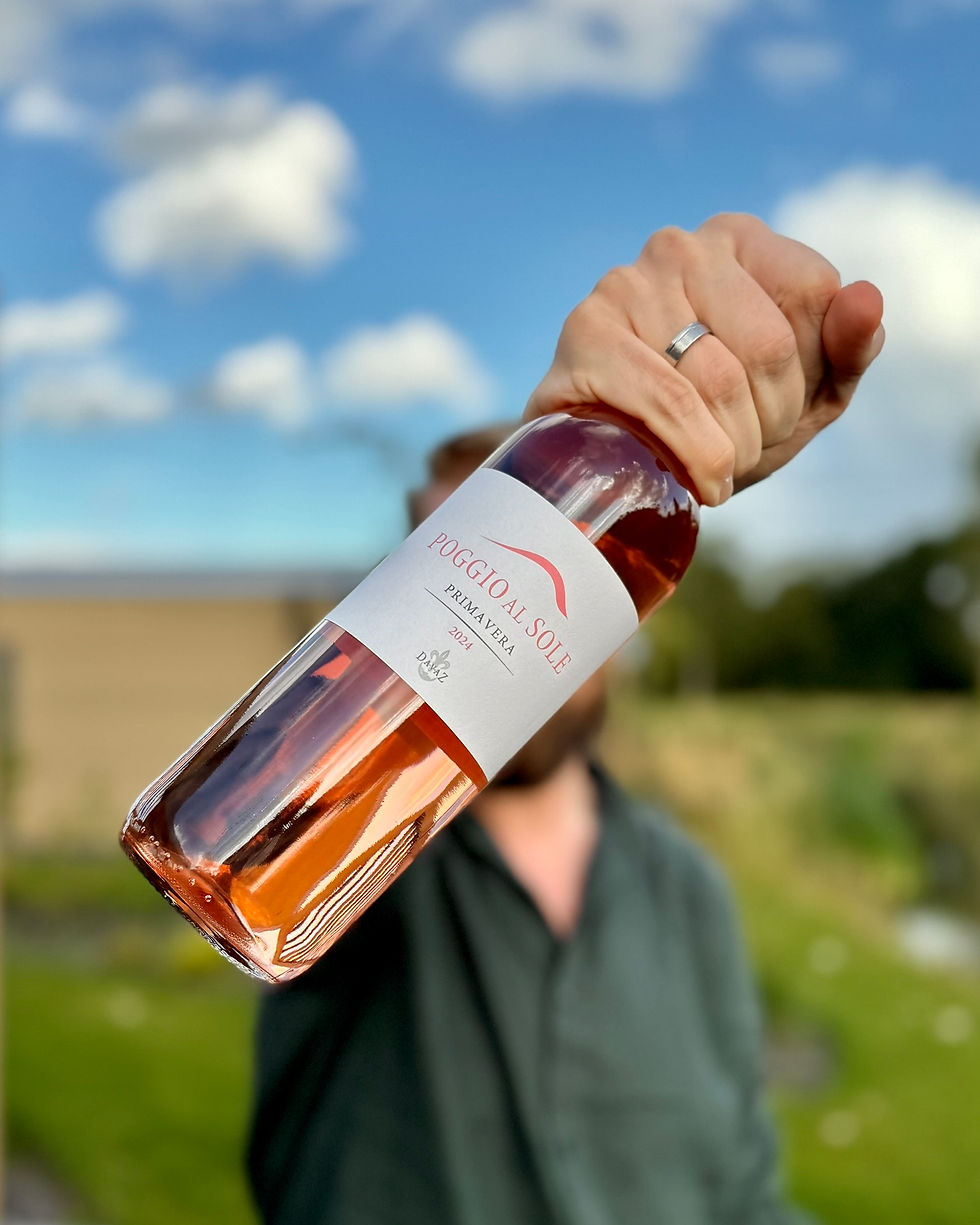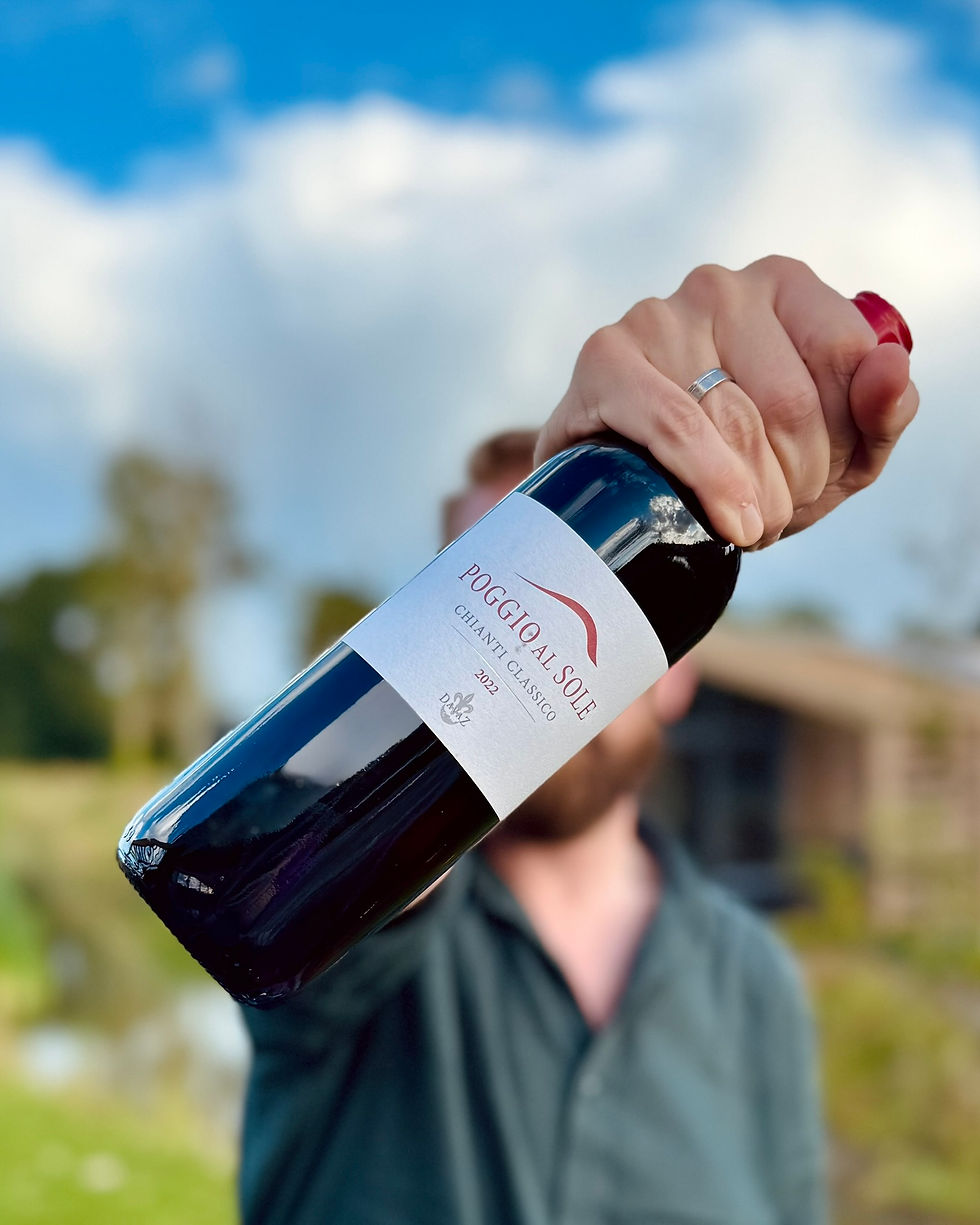Sangiovese: the sunny soul of Italy
- Koen van der Werf-Versteeg

- Aug 15
- 3 min read
One grape. A thousand flavors. Welcome to Italy's wine heart. And we're talking about Sangiovese. This ruby-red classic is the beating heart of Italian wine culture—centuries-old, distinctive, and endlessly versatile.

Where does Sangiovese come from?
Sangiovese originates in sun-drenched Tuscany, where the grape has been grown since Roman times. The name is said to derive from "sanguis Jovis" —the blood of Jupiter—which immediately speaks to the Italians' appreciation for this grape: Divine! While Tuscany is its home, it's also found in Umbria, Emilia-Romagna, and even parts of southern Italy. Outside of Italy? Hardly, as 85% of the world's Sangiovese is produced in Italy. But Italian migrants also brought their pride to Argentina, Romania, Corsica, California, and even Australia.
Old roots and family ties
Sangiovese is no stranger to the wine world. This grape has deep roots in Italian history—and thanks to modern DNA research, we now know its parents. One is Ciliegiolo, a grape with cherry-like aromas (the name literally means "little cherry"), and the other is a rare southern variety: Calabrese di Montenuovo . The latter hails from Basilicata and is rarely found anywhere but in history books.
But just like with people, the story doesn't end there. Sangiovese itself has also branched out in different directions. In Tuscany, they speak of Sangiovese Grosso (the thicker, more powerful variety, for example, in Brunello) and Sangiovese Piccolo (smaller in berry, often fresher and a bit spicier – typical of Chianti).
Growing with character
Sangiovese isn't the easiest grape for winemakers. It ripens late, is sensitive to climate changes, and acts as a kind of terroir mirror. Give it chalky soil and a warm, but not too hot, climate, and it produces wines with freshness, acidity, and a complex aromatic structure . In cool years, it tends towards astringent and slightly acidic. In warm years, it can become too jammy. In short: not an easy grape—but when it's right, it's truly right.
Alias alert: Sangiovese's many names
Anyone who opens a bottle of Italian wine will almost never see "Sangiovese" on the label. The grape goes by countless names:
Brunello in Montalcino
Prugnolo Gentile in Montepulciano
Morellino on the Tuscan coast
And in Emilia-Romagna? There it's simply called Sangiovese di Romagna .
The great wines of Sangiovese

Sangiovese forms the backbone of some of Italy's most famous red wines:
Chianti Classico DOCG – The classic, with its characteristic acidity, cherry fruit and earthy notes.
Brunello di Montalcino DOCG – Full-bodied and powerful, 100% Sangiovese, often with long wood aging.
Vino Nobile di Montepulciano DOCG – Elegant and slightly softer, with notes of plum and tobacco.
Rosso di Montalcino & Rosso di Montepulciano – The 'juniors', more accessible and suitable for drinking at a younger age.
And then there are the Super Tuscans – modern blends in which Sangiovese often works with Bordeaux grapes like Cabernet Sauvignon and Merlot. Powerhouses with an Italian twist.
Wine with teeth – what do you eat with it?
Sangiovese packs a punch. Its acidity and tannins make it a wine that begs for food. Think tomato dishes, grilled meats, hard cheeses, or mushrooms. A classic pairing? A plate of pappardelle al cinghiale (wild boar stew) from Tuscany – local, powerful, and perfectly balanced with the wine. Or a Florentine steak, but it also pairs beautifully with Cacio e Pepe.
Finally
Sangiovese isn't everyone's cup of tea, but it is a grape with depth. Whether you're looking for an elegant Chianti or opening a layered Brunello, you'll always taste sunshine, history, and a touch of Italian individuality. And that makes it more than worth discovering.
And what's even better: innovation has also hit the Tuscan wine scene! So, you won't just find full-bodied reds there anymore. These days, they also make fantastic whites and rosés made from 100% Sangiovese. And they're definitely worth a try. We've already done that for you; just look below! Oh, and they're all available at the Italian Wine Shop !
Want tips for affordable Sangiovese wines or something special for your cellar? Let us know in the comments – we'd love to help you find your next glass of Italian wine.






Comments